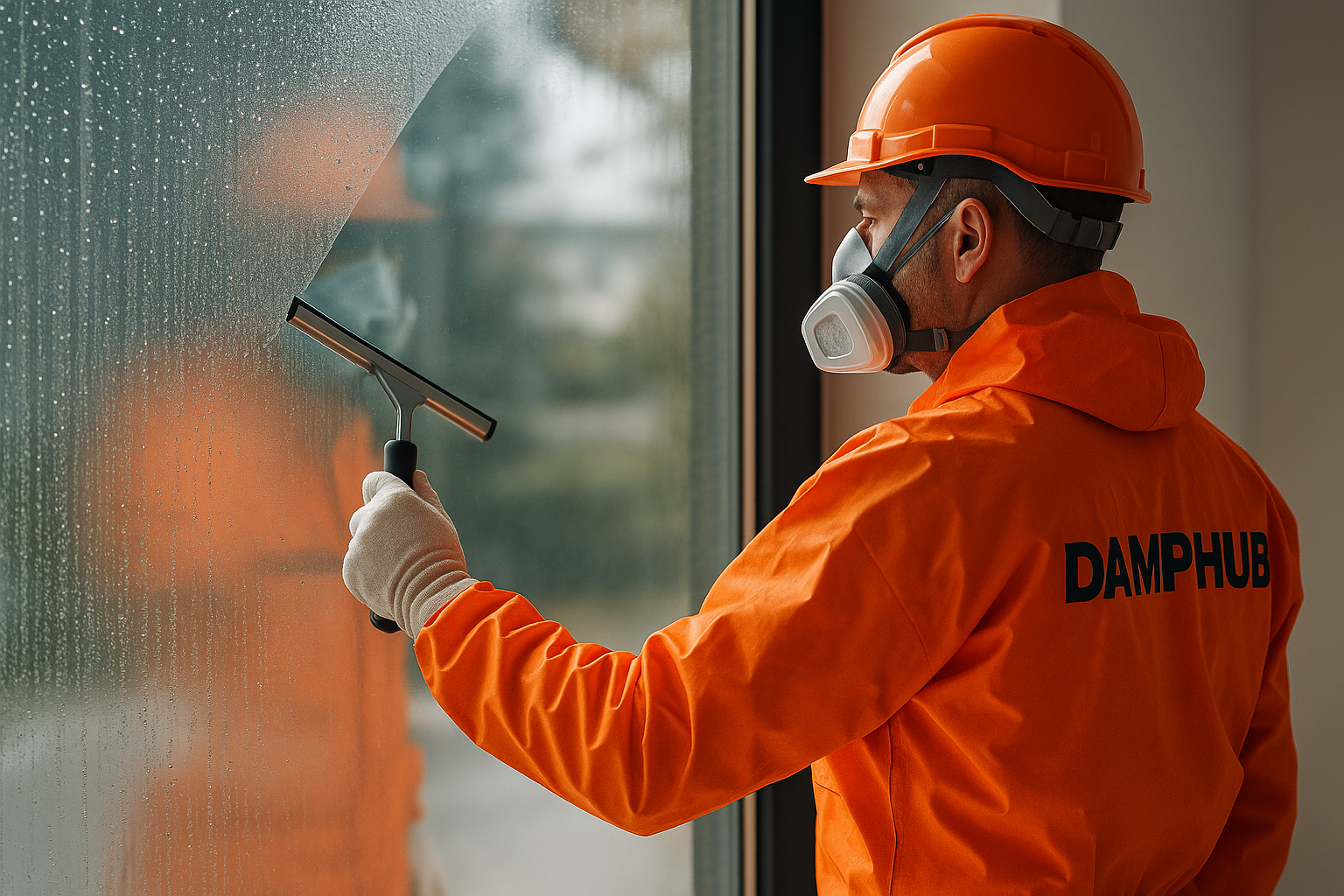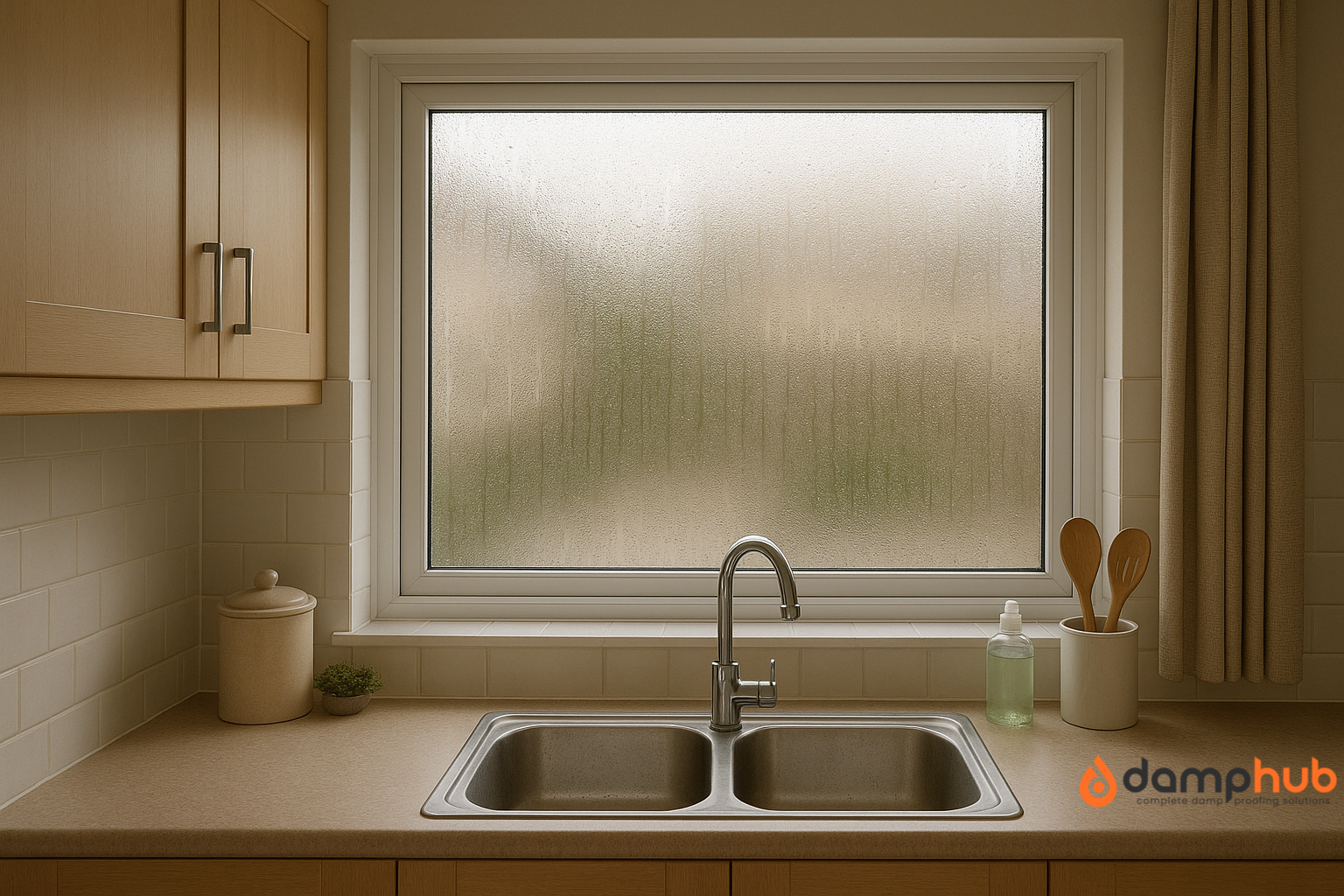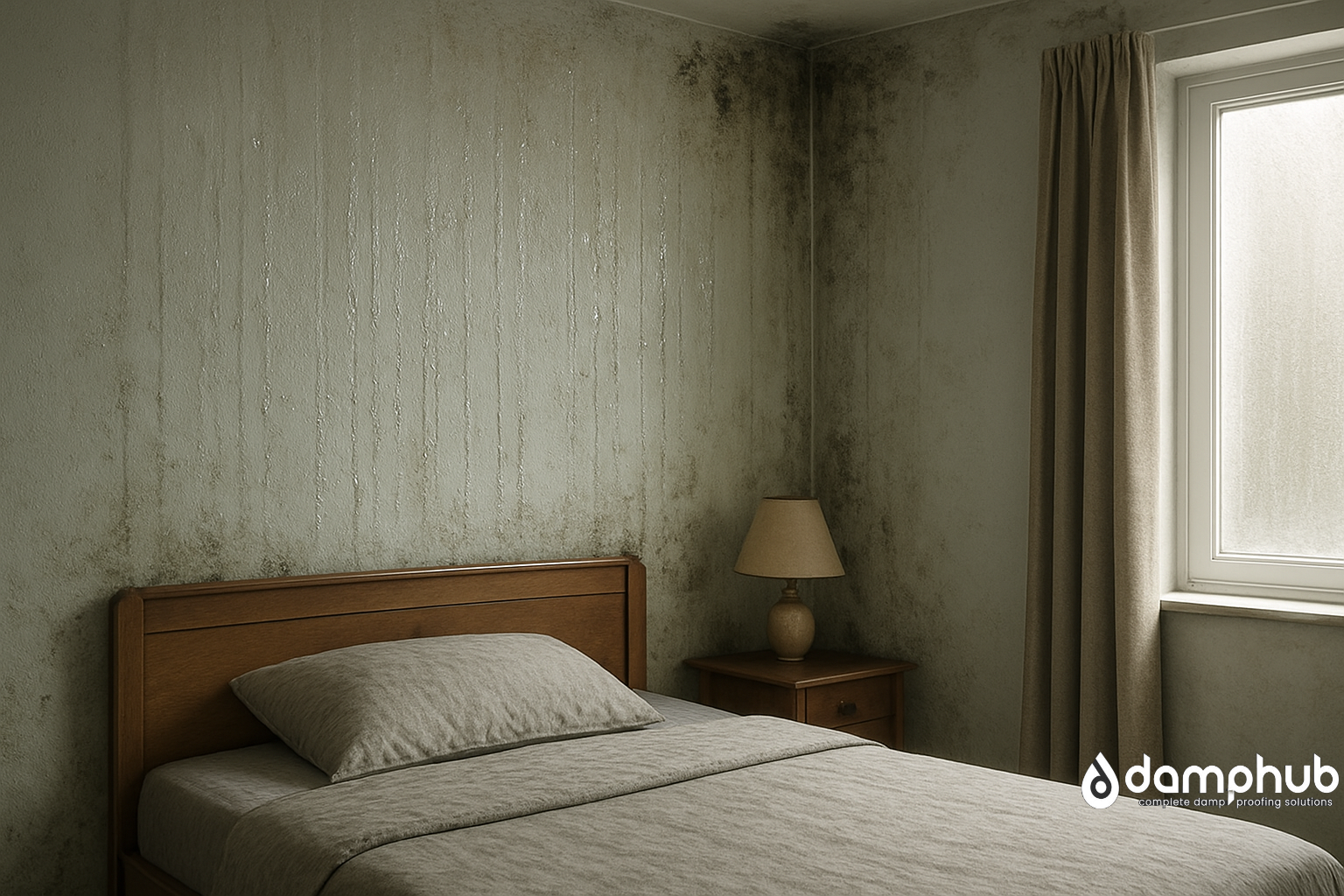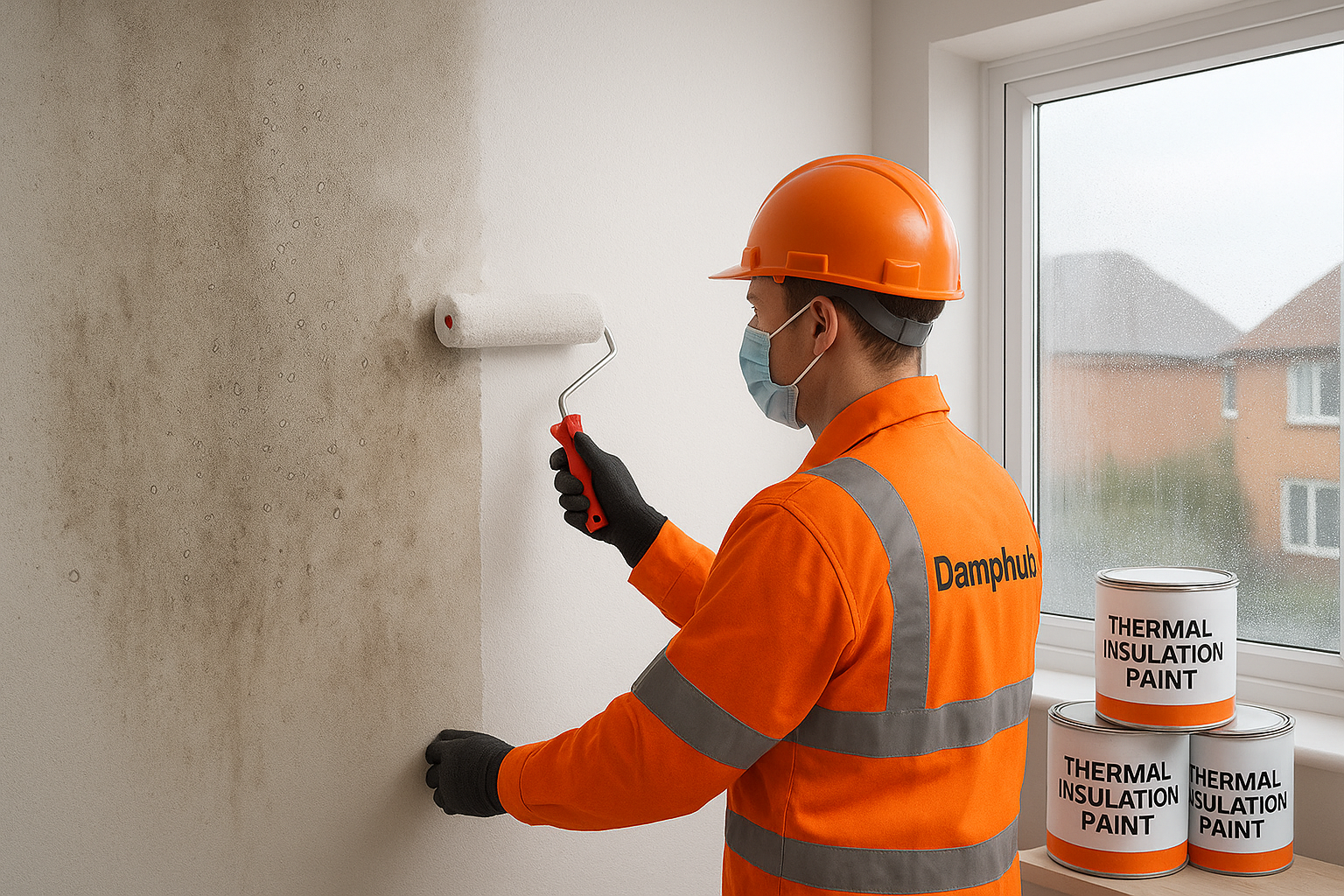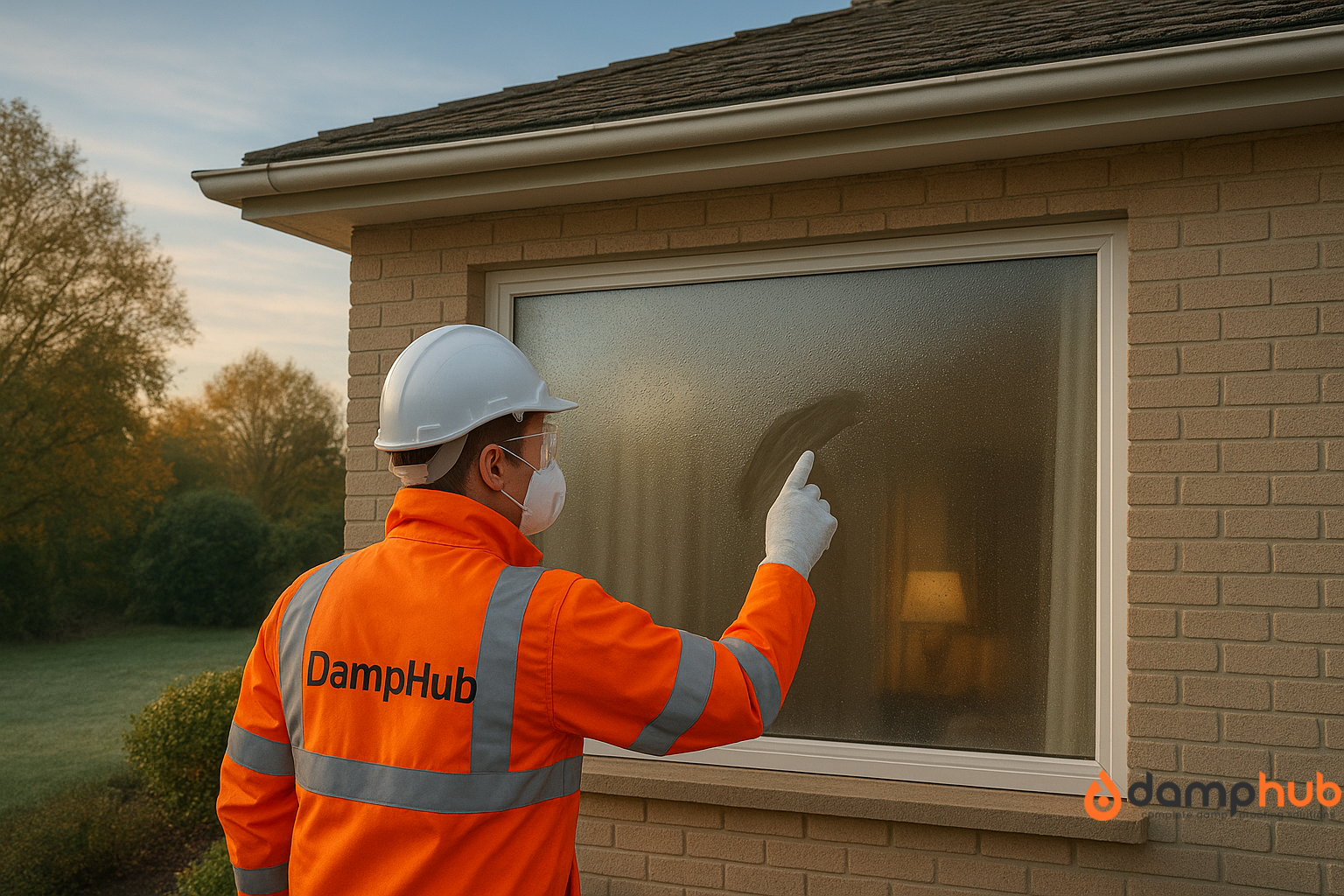
Wake up on a chilly morning, and the first thing you notice is your windows covered in mist. You rub a hand across the glass, only to realise the moisture isn’t inside at all, it’s on the outside. Strange, right? Most people instantly panic, thinking it’s a sign of damp creeping in. However, in many cases, condensation on the outside of windows is actually not a bothersome problem.
In this guide, we’ll dig into exactly what’s going on. You’ll learn why condensation on outside of windows happens, when you should worry, and what you can do if it bothers you. We’ll also address common questions, such as whether curtains exacerbate the issue and how to manage condensation overnight in winter. By the end, you’ll know whether those misty panes are a red flag or just harmless morning dew.
Related article you may also want to read: Condensation Inside Windows: What It Means & How To Fix It
Is Condensation on Outside of Windows Bad?
The short answer: No! Condensation on outside of windows is usually not a bad news. In fact, it’s generally a sign that your windows are doing exactly what they’re supposed to do: being energy-efficient.
Here’s why:
- Modern double- and triple-glazed windows are designed to trap warmth inside your home.
- That keeps the outer pane of glass cooler than the air outdoors.
- When moist outside air hits this cooler surface, it condenses, much like dew forming on a car windscreen overnight.
So in most cases, exterior condensation on windows is evidence that your glazing is energy-efficient. Ironically, if you never see condensation on outside of windows, it could mean your windows are less insulated, letting more heat escape.
But there are exceptions. Sometimes condensation on the exterior of windows could mean
- Moisture between the panes: This isn’t outside condensation at all. It usually means the window seal has failed and the insulating gas has escaped.
- Persistent condensation: If the misting lingers well into the day or only affects certain windows, it may indicate issues with shading (such as trees or walls blocking sunlight), drainage, or ventilation in that area.
In other words, don’t panic if your windows mist up outside, especially in the morning. But if the pattern seems unusual or prolonged, it’s worth investigating further.
What Does Condensation On The Outside Of Windows Mean?
Think of a glass of cold lemonade left outside on a humid day. Within minutes, tiny droplets appear on the outside of the glass. That’s condensation, and the same process is happening with your windows.
When you notice condensation on outside of windows in morning, it means the outer pane cooled overnight, the air outside was humid, and water vapour in that air condensed into liquid form.
So what does it really mean?
- Your windows are doing a brilliant job of keeping warmth indoors.
- Your glazing is energy-efficient enough to keep the outer pane cold.
- The weather outside is playing its part (humidity + cool air = moisture).
Good to Know
If the moisture is outside, it’s rarely a sign of indoor damp problems. The real red flag is moisture inside, especially if it pools on sills or walls.
What Causes Condensation on Outside Of Windows?
There are three main culprits, and they usually act together:
- Cool air at night: When temperatures drop after sunset, the outer glass pane loses heat and becomes the coldest nearby surface. Moisture in the air naturally condenses on it.
- High outdoor humidity: Damp mornings, fog, mist, or living near a pond or river raise the amount of moisture in the air. That excess vapour clings to cold glass windows as droplets.
- Well-insulated windows: Ironically, the more energy-efficient your glazing, the more likely you are to see exterior condensation on windows. The inner pane stays warm, while the outer pane cools enough for dew to form.
That’s why you’ll rarely see condensation on outside of old single-glazed sash windows. They let so much heat out that the outside pane warms up, stopping condensation.
How To Stop Condensation on Outside Of Windows
If condensation outside isn’t harming anything, should you try to stop it? Honestly, you don’t have to bother yourself. After all, it’s not damaging your home. But if you find it annoying (say, it blocks your view in the morning), there are a few things you can do.
Improve airflow around the glass
Trim back hedges or trees close to windows. Allowing air to move freely around the exterior can help moisture disperse more quickly.
Hydrophobic window coatings
Special sprays or coatings make water bead up and run off instead of misting. These don’t stop condensation from forming, but reduce its visibility.
Reduce local humidity outdoors
Avoid placing things that give off moisture (like water butts, dense planting, or dryer vents) directly below windows.
Upgrade window designs
Some high-performance glazing now comes with anti-condensation coatings that warm the outer pane slightly or make droplets less noticeable.
Pro Tip
Don’t confuse exterior condensation with misting between panes. If droplets appear inside the glass unit, your double-glazing seal has failed. That’s a problem and means the unit will need repairing or replacing.
Moisture on the outside = usually nothing to worry about. Mist between panes = repair job.
If you’re dealing with condensation beyond just the outside of your windows, our other guide could be helpful: How To Stop Condensation On Windows – A Complete UK Home Guide.
Wrapping It Up
Condensation on outside of windows can look unsettling at first glance. But in most cases, it’s a badge of honour for your glazing. A proof that your home is keeping warmth in where it belongs.
Yes, it can blur your view of the outside, especially on damp autumn mornings, but it’s not usually harmful. The real concerns are condensation between panes (failed seals) or heavy moisture inside your home.
So next time you wake to find your windows misted up outside, don’t panic. Grab a cuppa, wait for the sun, and take it as reassurance that your energy-efficient windows are doing their job.
Answering Your Questions About Condensation on Outside of Windows

-
Is condensation on the outside of windows normal?
Yes. In fact, it’s often a sign of excellent home insulation. If you see it mainly in the morning and it clears during the day, that’s perfectly normal.
-
When should I be worried about condensation on outside of windows?
Be concerned if:
– Moisture appears between the panes (seal failure).
– Condensation lingers all day and never clears.
– You notice damp spreading to frames, plaster, or sills indoors (a different issue altogether).Otherwise, exterior condensation is harmless.
-
What soaks up condensation on windows?
For inside condensation, cloths, squeegees, or moisture absorbers work well. For outside glass, nothing really “soaks it up” — nature handles it once the sun comes up.
Try This: If you’re fed up with wiping windows indoors every morning, place a small, portable dehumidifier near problem spots overnight. It won’t affect outside condensation, but it can work wonders for interior moisture.
-
How to stop condensation on windows overnight in winter DIY?
If you mean indoor condensation:
– Ventilate bedrooms (open trickle vents or leave a window slightly ajar).
– Use a dehumidifier.
– Avoid drying clothes indoors without ventilation.
– Keep heating steady instead of off-and-on blasts.For outside condensation, there’s little you can do except coatings or better airflow.
-
Do curtains help with condensation on window exteriors?
Curtains don’t change exterior condensation. Inside, though, heavy curtains can trap moist air against the window, making condensation worse. Keeping a small gap between the curtain and the glass helps airflow and reduces moisture.


